![]()
by SIMPLICIUS THE THINKER
As the smoke cleared the battlefield, we were left witness to a disaster of unprecedented proportions. NATO’s most advanced tanks and armor were left as smoking ruins:
The most shocking development was the closeups revealed that these weren’t just any NATO tanks and IFVs, but were in fact some of the most advanced upgraded variants. Many of the Leopards destroyed were not the older 2A4s but in fact the much newer 2A6s, which are some of the most advanced tanks in the world.
The Bradleys were M2A2 ODS-SA variants, seen under the 2003 column below:


The losses by some counts are staggering for a single assault:
The Ukrainian Telegram channel “Rezident” reports that, according to its sources, in the previous three days the AFU has lost over 150 units of heavy equipment, including 12 German Leopard MBTs and 15 American M2 Bradley IFVs.
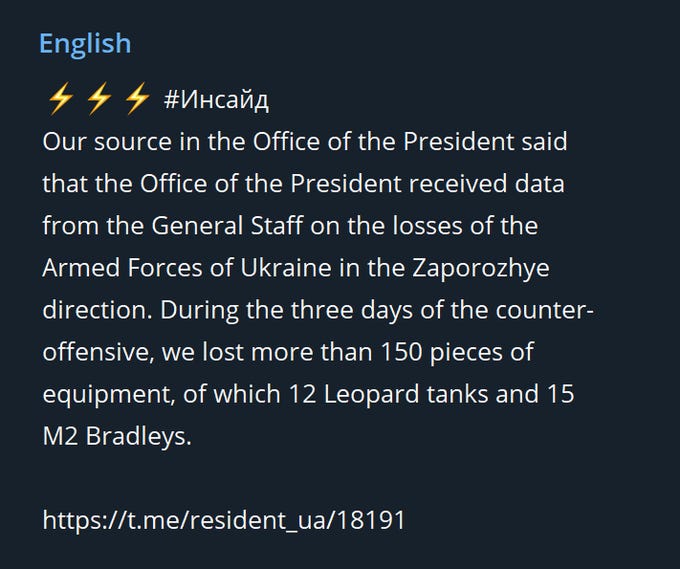
If the above number is true, that would represent literally almost 50% of all supplied Leopards already gone and upwards of 15% of Bradleys—in just a two hour fight.
In fact, the same Ukrainian channel says that the Leopards didn’t even get to fire a shot:
⚡️⚡️⚡️The Ukrainian TG channel ” Resident ” writes:
Our source in the OP said that the Armed Forces of Ukraine have been trying to storm the Russian first line of defense for the third day, but there was no result. Our equipment does not even have time to enter the battle when it is covered with artillery, which leads to heavy losses and a return to their positions. In three days we have lost more than ten Leopard tanks, which have not fired at the enemy⚡️⚡️⚡️
Also, there appears to be photo and video confirmation that Russian troops have in fact secured the area of destruction, which means these Bradleys/Leopards are likely captured or have been recovered by Russian forces:
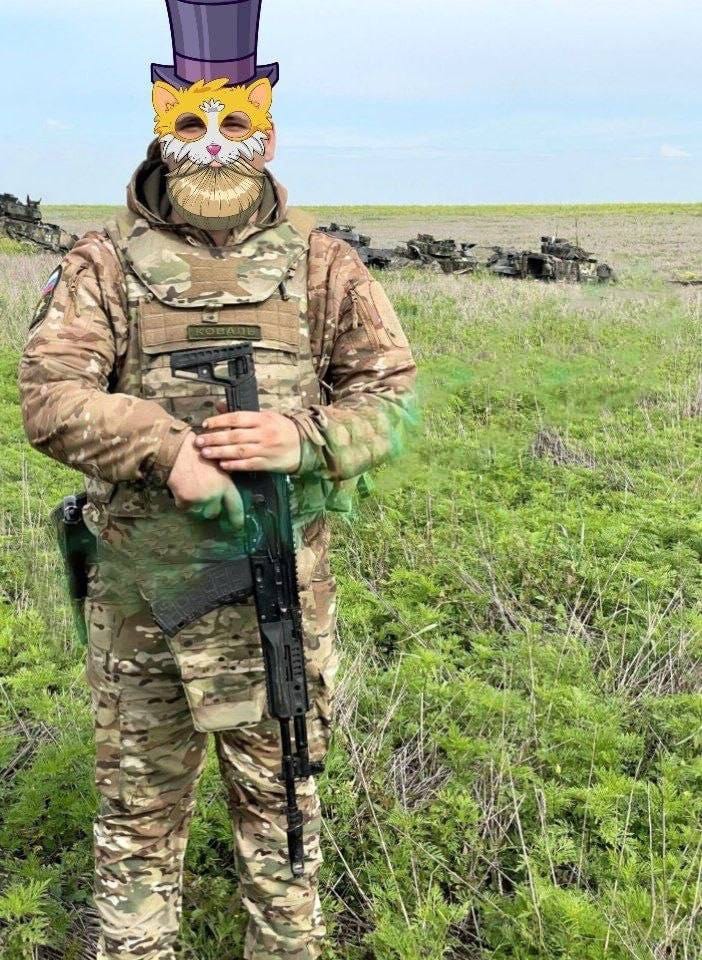
If you watch the above video, you’ll note it shows the same scene of destruction in the background of the Leopards surrounded by many Bradleys.
So we can likely expect a Bradley/Leopard exhibit in Moscow Victory Park or on the Red Square sometime in the future. Either that or China/Iran will get to examine these goodies for reverse engineering.
And here’s an actual before and after account from the AFU side showing how their Bradleys were biting the bullet:
But let’s break down the battle in detail because I see a lot of misconceptions being thrown around, particularly on the heavily-coping Ukrainian side, about what exactly happened.
Firstly, one thing that needs to be noted is: in yesterday’s report I outlined how the 47th brigade formations approached at night in order to use their putatively fancy Western sensors. This is validated today by the revelation that many of these knocked out units are in fact the latest variant like the SA version of the Bradleys. The reason being that one of the main advantages of the most upgraded variants is typically much better optics of every kind, from 3rd gen thermals/night-vision to additional/more advanced commander’s independent sights, etc.
Secondly, what we now know is that Ukraine advanced through the minefield with the much-vaunted American FWMPs or Full Width Mine Ploughs. It should be said that I did an entire indepth article on this that you should read to gain context if you’re really interested in the mechanics of what went down:
I wanted to follow up with a little explanatory piece about two currently crucial issues faced by the Russian side in the war.
Firstly, there’s the topic of DU—depleted uranium. Britain has announced that it will be supplying DU penetrator rods along with its Challenger-2 tanks. As you know, with my analysis, I always strive to uncover the small unspoken things under the hood, the angles that the more ‘mainstream’ narratives fail to see, acknowledge, or understand.
I wanted to follow up with a little explanatory piece about two currently crucial issues faced by the Russian side in the war. Firstly, there’s the topic of DU—depleted uranium. Britain has announced that it will be supplying DU penetrator rods along with its Challenger-2 tanks. As you know, with my analysis, I always strive to uncover the small unspoke…
The reason it’s important is because the above article was written partly as response to the Western side months ago claiming that Russian mine clearing capabilities are archaic, which followed the infamous Vugledar incidents.
But more importantly, I had outlined how Western OSINT accounts claimed the American mine clearing system was far superior, and would never suffer from such consequences as Russian systems in Ukraine have experienced. The reason is the FWMP uses a different method—instead of trying to explode the mines with heavy rollers, it uses a plough to basically dig up the ground and ‘clear’ the mines by pushing them to the sides of the path, like so:
The big ‘legs’ you see on the front are just sleds that make it smoothly glide over the ground while the plough behind it excavates the earth and pushes it aside.
The photos below are from yesterday’s disaster:
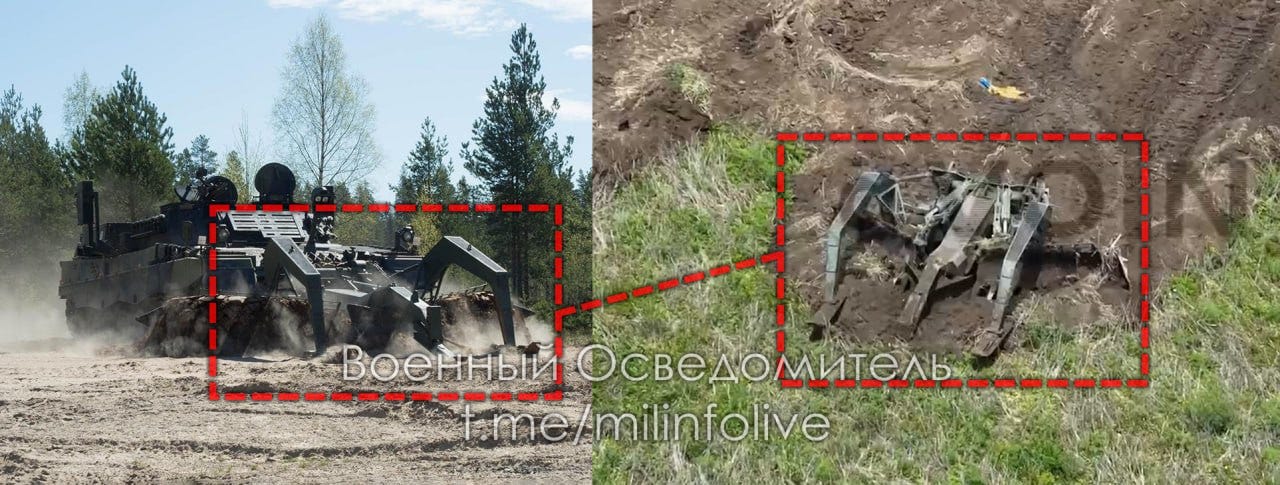

Ironically, note the caption below this bottom pic. The 47th was in fact considered by some to be Ukraine’s strongest unit. By ‘all volunteer’ they don’t mean volunteers in the regular sense, like untrained civilians volunteering for service. They mean actual seasoned Ukrainian soldiers who volunteered to be transferred into this most ‘elite’ assault unit knowing that it will be a vanguard style unit with a lot of risk but equipped with the best weaponry.
Yesterday they used both Soviet IMR-2 and BREM engineering vehicles with KMT-9 rollers as well as, it appears, the Leopard 2Rs, also called Patria Heavy Mine Breacher, pictured above. The below photo shows the 2R/Patria knocked out:

So, the biggest question I see being asked on social media, particularly from distraught and devastated Ukrainian supporters, is how is it possible an elite NATO-trained Ukrainian brigade can have such ‘poor’ tactics such as “bunching” and not dispersing, and following each other in an easy to kill conga line.
First, we must note that these mine clearers above rip up and dislodge the earth and create a path easily visible from photos:
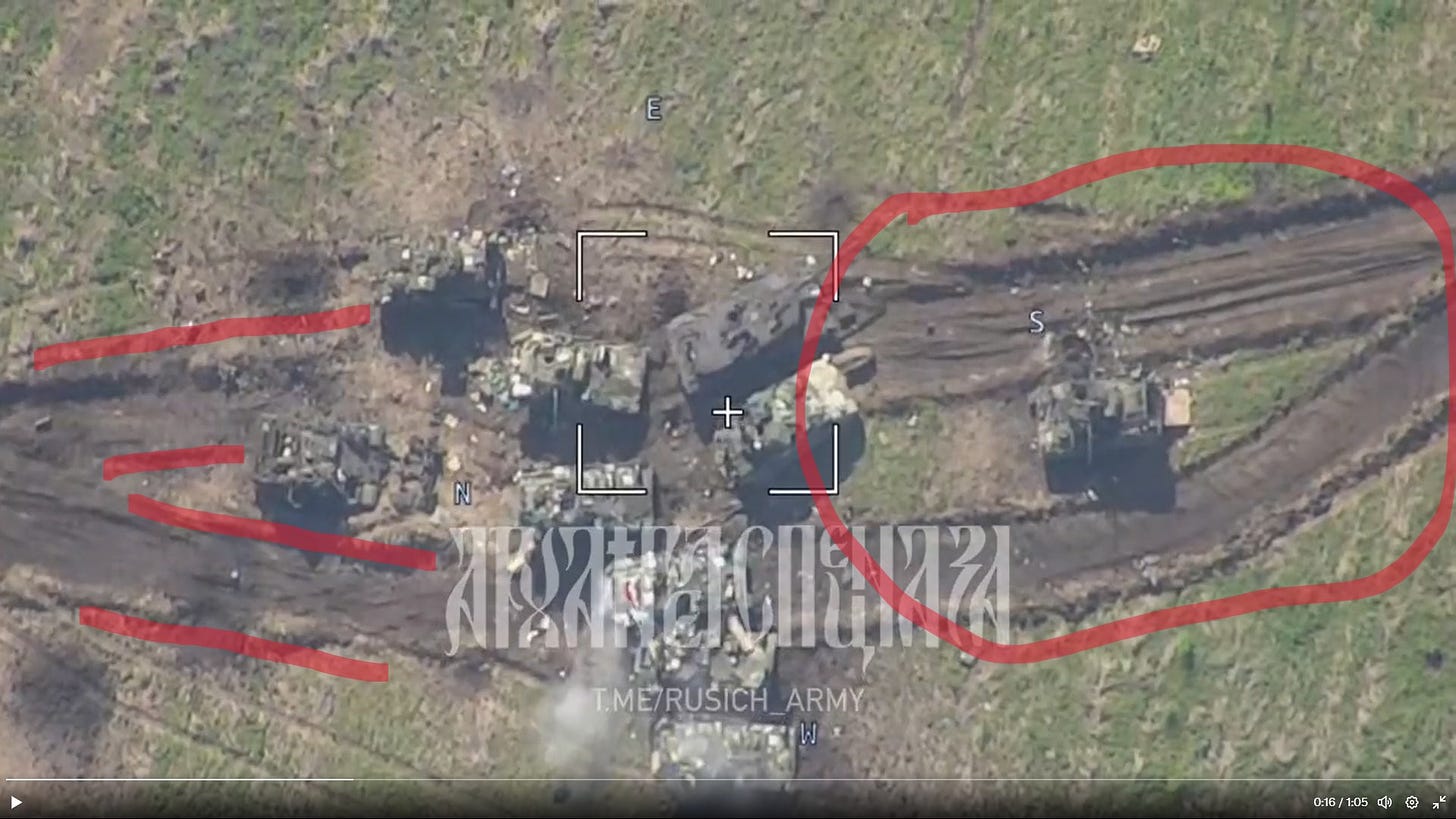
We can clearly see that the AFU brigade was following a strict protocol of sticking to the passage of turned up earth that the FWMPs were creating for them.
We don’t know exactly how dense the minefields Russia deployed were, but Russia has some of the most sophisticated FASCAM style mine systems in the world, and they can create dense fields if they choose to. If the field was really dense, then you have no choice but to continue in the tiny narrow passage etched out for you by the FWMP.
Next, I saw some pro-Ukrainian analysts make a good point that you can’t abandon a mission just because the vehicle ahead of you was struck. You have to continue on no matter what. But even so, how is it possible they were destroyed in such mass clumps as seen below?

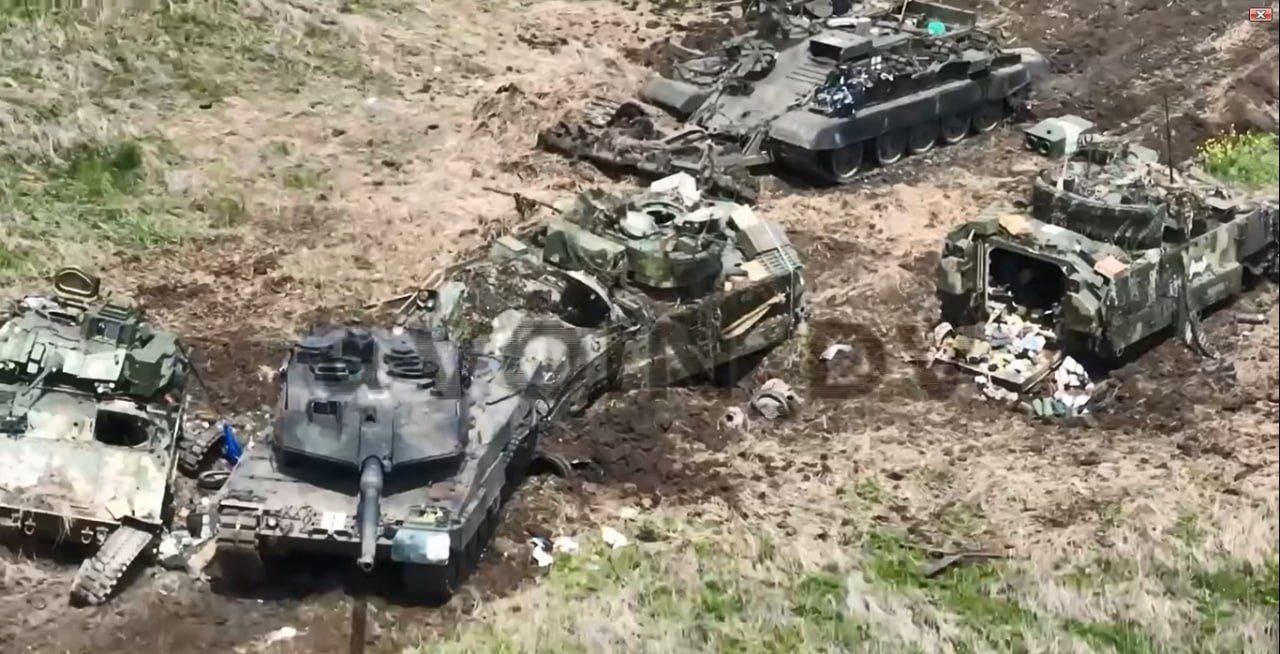
First, note a few forensic pieces of evidence. In the lower photo we see the BMR mine clearer on the top, with its KMT style mine trawl. The vehicle is knocked out. Ahead of it we see 3 separate Bradleys knocked out with a Leopard 2A6. The Bradleys are knocked out by mines: this is obvious by the fact that one of them is literally inside a ditch of upturned earth which means a mine exploded beneath it. And the other one on the far left has its track destroyed which also heavily points to hitting a mine.
Another version of the top most photo. Notice it’s the same scene as the above but from the top. By the #1, you’ll note how the Leopard 2A6 was knocked out in the middle of the FWMP track.
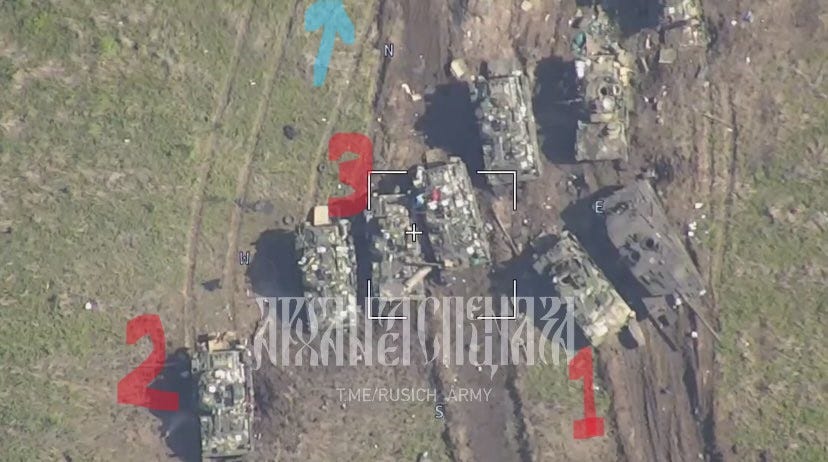
There’s no indication of how it was knocked out but this closeup can give us a clue:
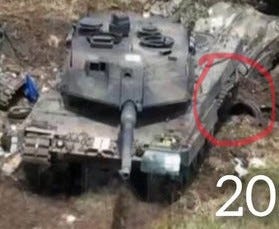
Not only are the armor skirts toward the rear damaged, but you can sort of see the track bent out of shape and something that looks like a wheel lodged into the ground. It would be strange for the tank to hit a mine with the rear first unless it was backing up but the other possibility is an ATGM hit to the side.
But we know that where you see the #1, the Bradley apparently tried to go around the knocked out Leo. But it drove directly onto the cleared earth that the FWMP had pushed out. All the mines would have been pushed there, and it seems the Bradley ate them.
On numbers 2 and 3 you can see the same thing. A Bradley inside the 2nd track cleared by the FWMP was somehow knocked out and the others tried to go around and hit more mines in the non-cleared area. Other Bradleys likely came to try to evac the wounded and were destroyed by artillery, ATGMs, drones, etc., right next to the others.
The problem here is, if your lead vehicle at the front of a convoy in such a narrow mine-cleared track is hit by something like a Ka-52 missile, then the vehicles behind it have no other choice than to “take the chance” and go around into the non-cleared area. So Russian Ka-52s or even ATGM crews can simply aim at the front vehicle to immobilize it and the rest are now in severe danger by being forced into the mine zone.
And we even have some video evidence of this. Here are some Ka-52 videos from yesterday’s assaults. Note how the Ka-52 targets the front vehicle of the conga line:
The fact is, when you have a tiny narrow track of cleared roadway and the vehicle in front of you is hit, there is simply no other choice but to take the chance into uncleared territory and go around. But when you blow up, the guys behind you likewise panic and try to go around you even deeper into the uncleared portion, and they hit mines too.
It may all seem very common sense to us judging it from afar, but it’s plausible that the AFU did not think Russia had mined the fields that densely. Recall, we were fed over a year’s worth of propaganda that Russia doesn’t even mine at all, and Ukraine is chief amongst the victims of Western gaslighting. “Russia is weak, Russia uses nothing but old T-55 tanks, Russia doesn’t blow bridges nor mines nor has any airforce, don’t worry, you can safely advance!”
Lo and behold, it turns out Russia’s airforce is deadly after all and Russia does mine very densely when it needs to, and particularly when the actual Russian army has prepared the position, not small under-armed volunteer groups like was the case in the Kharkov retreat of 2022.
The other thing to consider is, if you’re forced to hold for a while, or have taken some damage, it’s arguably safer to park next to other tanks and take refuge amongst them. Think about it: the main way that artillery takes out armor is typically via fragmentation shrapnel from the sides where most tanks have extremely thin armor. It’s rare for an artillery shell to get ‘lucky’ enough to land right on top of the tank hatch. So if you’re in a wide open field, why wouldn’t it be smart to squeeze your armored vehicle in between two knocked out vehicles so that your sides are now completely protected from artillery landing nearby.
The only obvious downside is you can argue that the spot will be pre-registered for artillery systems already as they have been hitting that area and can possibly more quickly hit you. But it also protects from ATGMs as they will be blocked from hitting you if you put another disabled tank between you and their LOS. This could explain a large number of such ‘bunched up destroyed armor’ seen on both sides of the war. Remember Russia’s Vugledar fiasco?


Finally, my paycheck is $ 8,500 A working 10 hours per week online. My brother’s friend had an average of 12K for several months, he work about 22 hours a week. I can not believe how easy it is, once I try to do so. This is what I do
🙂 AND GOOD LUCK.:)
HERE====)> https://hignearningdoller.blogspot.com/
06/11/23 – Russia shells boats in Ukraine flood rescue, three dead – governor –
No.
Reminder:
Biden just tried to indict Trump after we learned he took a bribe to sell his office (to fire the prosecutor).
When you tie this to the fake impeachment for Trump investigating Biden admitting guilt on camera, A LOT of people are going to go to jail for this.
06/13/23 – Suspected drone, sabotage strike hits oil refinery 80 miles from Putin’s billion-dollar compound –
06/13/23 – Borrowing Tactics From The U.S. Army, The Ukrainian Marine Corps Is Thundering Through Russian Lines In Fast-Moving Columns –